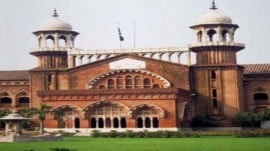
Rawalpindi’s rapid and unplanned urbanization, coupled with climate change, wrecks havoc on slums and housing — often illegal — adjacent to Nullah Leh. It has also created perfect breeding grounds for all sorts of diseases. The area around the stream is prone to dangerous flooding several times a year, malaria outbreaks and epidemics arising from the raw sewerage flowing into the water.
Presently, the city’s four administrative authorities — Rawalpindi Development Authority, Rawalpindi Cantonment Board (RCB), Chaklala Cantonment Board (CCB) and Tehsil Municipal Administration (TMA) — are responsible for managing 170 union councils.
A look into city’s administrative structure reveals a confusing and often overlapping mesh of responsibilities, in addition to little or no coordinated mechanism for keeping the environment clean.
An overview of preventive measures shows that the city lacks any extensive awareness or public involvement programme to address the issue, while the TMA, CCB, and RCB are only picking up solid waste in their designated areas.
Water and Sanitation Agency (WASA) Assistant Director Information Umar Farooq told The Express Tribune that the authority tests water samples from domestic sources on a daily basis to ensure that the water from filtration plants is drinkable.
He further explained that the infrastructure for management of drinkable water and disposing waste water was put in place in the 1950s. “Over time, we have been trying to replace old pipes with new ones, but a significant part of the system still remains antiquated”, he added.
The real issue, he said, arises when people don’t make enough arrangements for water discharge while building ground storage tanks, eventually leaving stagnant water lush with fungi.
He further informed that WASA also has a disinfection scheme through which workers are sent to clean tanks and fix pipes for free, via a call to any of its 14 complaint offices. Due to the absence of any awareness campaign, however, people do not generally avail the facility and are consuming unhealthy water.
WASA only has the capacity to deal with 35 per cent of domestic waste water, with the rest discharged in the Leh, said an official requesting anonymity. “Add to this the unregulated dumping of domestic solid waste, and it translates into havoc in the environment around the Leh,” the official said. He said that the last government had plans of building embankments along the entire stream, including the waste water discharge through another line, leaving the water relatively clean. But the new government seems uninterested in that proposal.
It is a two way process and the general public do not seem to realise that throwing waste right outside their homes is not a solution, Farooq added.
Published in The Express Tribune, May 30th, 2015.











































COMMENTS
Comments are moderated and generally will be posted if they are on-topic and not abusive.
For more information, please see our Comments FAQ